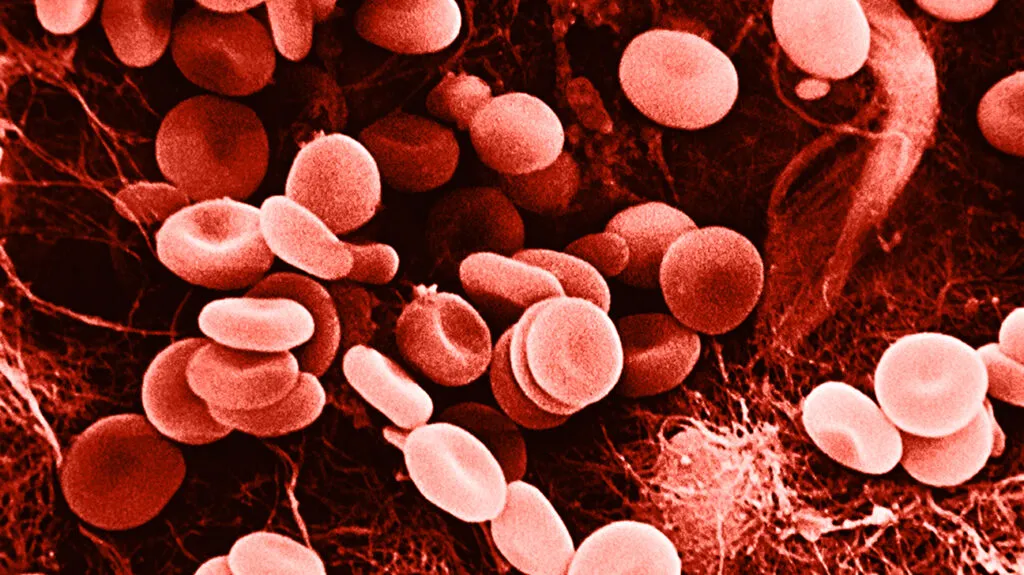How to calculate lifespan of your red blood cells using CBC values.
HbA1c is the measurement of glycated haemoglobin. This means the amount of excess sugar that sticks to your haemoglobin in your RBCs. As the normal lifespan of RBC’s is considered somewhere between 90 and 120 days, the HbA1c value can differ based on how long your RBCs survive. The longer the RBC live, the higher the HbA1c value will return and vice versa. That is why the people who have haemolytic anaemia normally have lower A1c levels and you can not rely upon a1c test as their diabetes diagnosis or as a glycaemic control measure.
A study showed that a lot of patients with G6PD deficiency and anaemia are misdiagnosed for diabetes because of falsely low a1c.
You may also have perfectly fine blood glucose but because your RBC live longer, you may get a falsely higher a1c.
I have spent days researching how to correlate Red Blood Cell (RBC) lifespan with HbA1c and here are my findings.
Normal RBC lifespan is 100-120 days.
If your RBC lifespan is lower than average, your a1c is going to be falsely low. I still can't figure out in what proportion though.
If your RBC lifespan is higher than average your a1c is going to be falsely high. I still can't figure out in what proportion though but trying to dig into papers to understand.
To calculate your RBC lifespan, you will need to do some lab tests which are not easy to do, so I found a way where you can estimate your average RBC lifespan by simply having few blood lab values. However, the author where I found the original calculation (reference is given below) used the figures in units that we do not use in UK. So I had to further dig into how to convert these units.
The formula to calculate your RBC lifespan.
So here is the formula and how it works.
What you will need:
- Reticulocyte counts (Retic count is normally not a part of NHS CBC test, so you will need to ask your GP, and its fairly easy to get it done during your CBC labs)
- Your RBC count
- Haematocrit .
The retic number that comes back is in absolute count but for this formula we need it in percentage.
So to calculate percent retic count, use the formula below:
Reticulocyte % age Number = Absolute retic count/RBC count
For example my retic count came back at 57. and my RBC count was 44.8.
My retic %age = 57/44.8 = 1.27%
Next thing you need to calculate is retic survival rate (maturation correction) using the table below:

Use the above table to get your corrected maturation number.
For example, my haematocrit is at 42% so my retic survival correction number is (1)
Now use this formula to calculate your RBC lifespan
RBC lifespan = 100/(retic%/corrected retic survival rate)
In my example it would be = 100/(1.27/1)
That is 78 days.
My a1c always comes a little lower than my readings using finger prick testing.
My a1c comes back at 27 but in reality, it should be close to 32.
I suppose if my RBC lifespan was 100 days, it would have corrected my a1c.
I already know that my RBC span is less than normal due to G6PD deficiency, but I didn't know what’s the average lifespan in my case. So now I know my RBC average but yet need to find the equation that can find correlation between RBC lifespan and a1c. I can only guestimate at this point in time as to how many days my lifespan is less than normal in %age and how much %age it will reduce my A1c.
Probably someone could help here?
Please use below references to understand it further. This is an interesting article and can be used to correlate RBC lifespan with a1c based on their observations on half life of these erythrocytes.
https://www.ncbi.nlm.nih.gov/pmc/articles/PMC5094338/
This is where i got this formula
https://forum.fudiabetes.org/t/a1c-test-results-calculating-your-rbc-lifespan/3965
Please share your feedback and finding in comments below.
